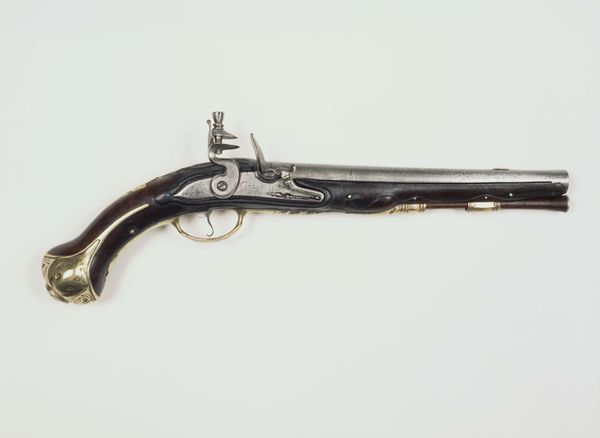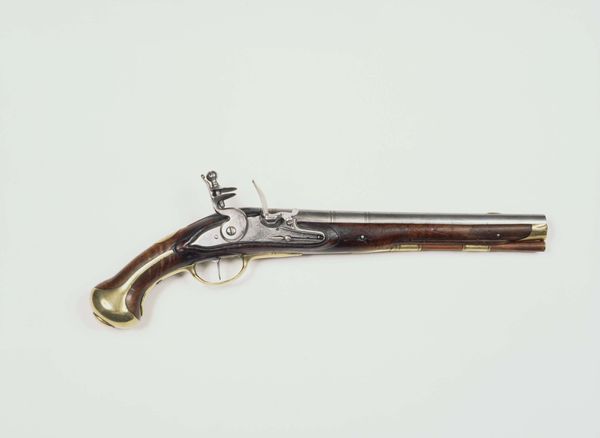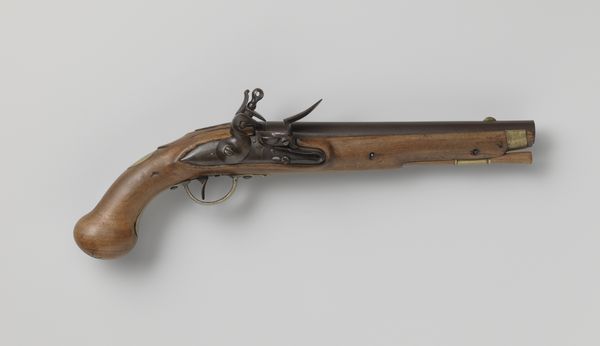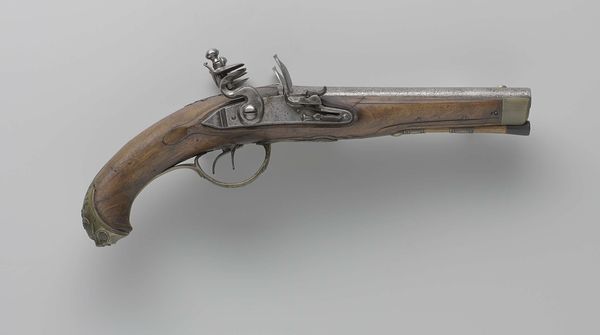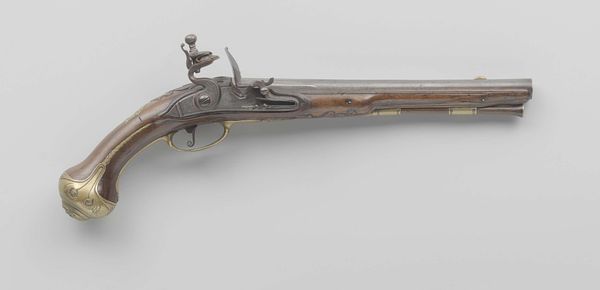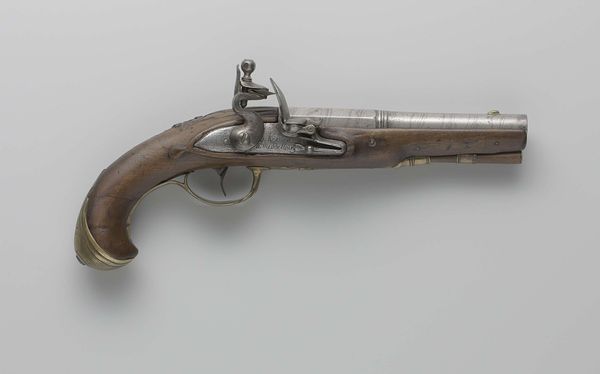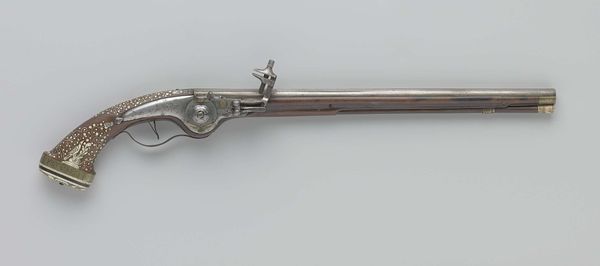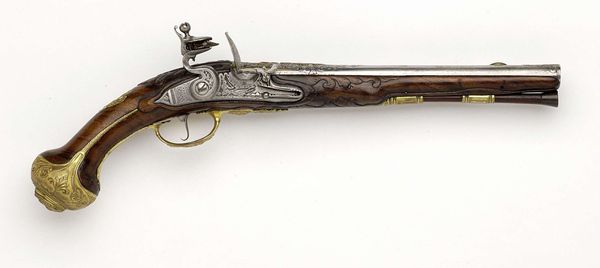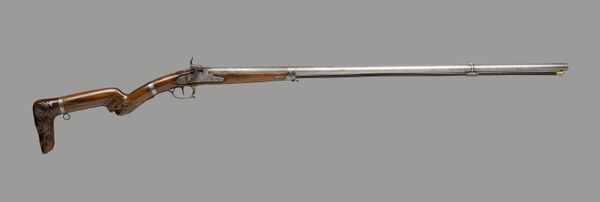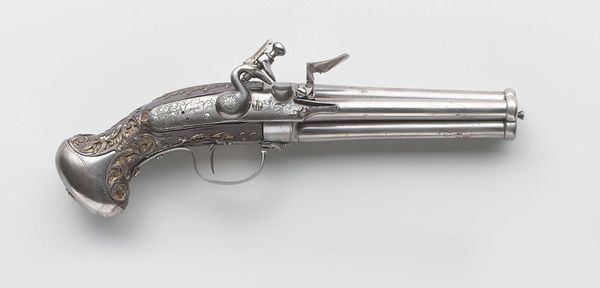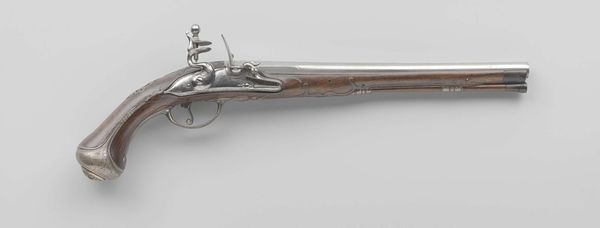
mixed-media, carving, metal, sculpture, wood
#
mixed-media
#
carving
#
metal
#
sculpture
#
sculpture
#
wood
#
history-painting
Dimensions: length 42.5 cm, length 27.8 cm, diameter 15.4 mm
Copyright: Rijks Museum: Open Domain
Curator: Here we have an interesting piece, a flintlock pistol dating from roughly 1800 to 1850, attributed to Lazaro Lazarino. It’s crafted with a mix of wood, metal, and carving, a powerful, if antiquated, object. Editor: My first reaction is that this is a highly gendered object; you can't help but think of masculine power and potential violence when you see it. It's also beautiful, though—that wood grain is remarkable, and the metallic parts almost look ornamental. Curator: Absolutely. The ornamentation does offer a critical insight. As firearms became more prevalent, their display also took on significant meaning. Ownership signalled status, authority and access to the colonial theatre. Its a functional tool, of course, but also a cultural artifact wrapped in symbols of dominance. Editor: You're so right; there's such an undeniable link here between power, technology, and empire. And you have to question that impulse to turn tools of violence into these exquisitely crafted objects. It feels… disquieting. What narratives of colonial exploitation are interwoven into its history, into the hands through which this passed? Curator: Indeed. When studying objects such as this pistol, context becomes everything. Museums often highlight aesthetic craftsmanship, but that approach overlooks the violent realities these tools enabled. Whose stories get highlighted, and who is erased in that curation? Editor: I think it’s crucial we don't separate art history from its sociopolitical reality. Thinking about the communities and the histories impacted, prompts us to remember that items such as this represent trauma, violence, and very uneven distributions of power. Curator: These kinds of items are frequently displayed as marvels of technological advancement. Placing it within historical currents, considering whose interests they serve and who is affected is key for its representation today. Editor: I am compelled to consider how such artifacts inform our contemporary moment, to ask what ghosts are conjured when we admire or acquire them. They prompt necessary questions about accountability and the ongoing need to understand the echoes of our shared and fraught histories. Curator: A fitting thought to close our commentary. A great deal to reflect on in the meeting between aesthetics and history.
Comments
No comments
Be the first to comment and join the conversation on the ultimate creative platform.
